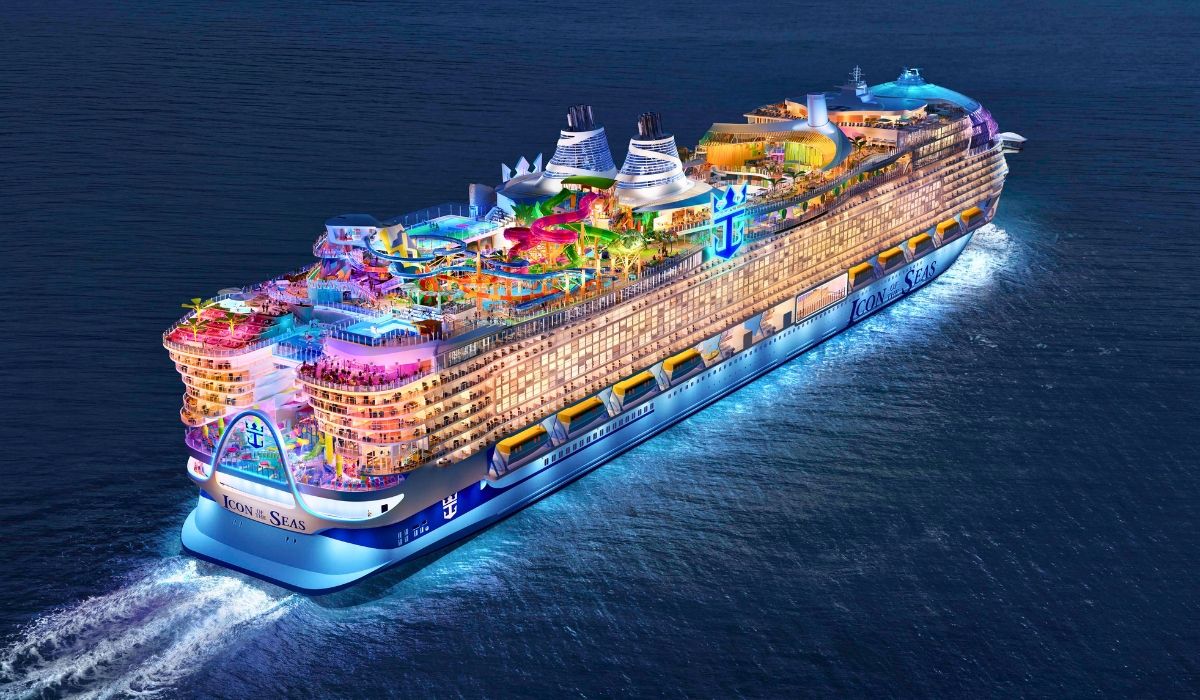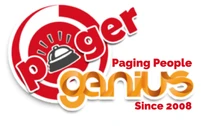
Why Cruise Ships Still Use Pagers
Cruise ships are floating cities. They need simple, reliable ways to reach guests and crew across decks, cabins, and dining rooms. Even with smartphones and ship apps, many lines keep using cruise ship pagers for specific tasks that require instant, unmistakable alerts.
This article explores why traditional paging survives at sea. It looks at practical uses, safety benefits, and how operators choose the right equipment. Along the way we’ll subtly point to a solid option for crews and guest services: Pager Genius’s traditional wireless pager system.
If you work in hospitality or operations on a ship, this piece will help you think through whether a dedicated paging setup still belongs in your toolbox.
Table of content

A Short History: From Horns to Handheld Pagers
Ships have always used simple signaling, horns, bells, and lights. As passenger ships grew larger, crew needed ways to call selected groups or individuals without creating noise for everyone.
Handheld pagers arrived as a clear, private way to signal. A pager can vibrate and flash, calling a single staff member or group without a public announcement. On a cruise ship, that privacy is valuable in busy public spaces.
Over time, the technology has remained valuable because it’s consistent and dependable. Unlike apps that rely on onboard Wi-Fi, a dedicated paging radio is a closed system. That reliability is one main reason many lines still use cruise ship paging systemequipment today.

Why Traditional Pagers Remain Useful on Ships
One reason pagers survive is coverage. A good paging transmitter reaches across multiple decks and into service corridors. This is critical when crew are spread across a large vessel.
Pagers are also battery efficient. A pager can stay charged for days with normal use. That means fewer interruptions for staff and less chance of missed calls during peak service hours.
Another point is simplicity. Training the crew to use a pager is quick. There’s no account setup, app update, or password to forget. For basic, repeatable calls, a dedicated pager system just works.
Common Operational Uses Aboard Cruise Vessels
In dining and food service, pagers help manage wait lists and table turns. Instead of public announcements, hosts can alert guests or call servers quietly and directly.
Back-of-house teams use pagers to coordinate deliveries and cleanups. A kitchen manager can call a runner or steward without leaving their station, saving time and reducing congestion in service corridors.
Maintenance and engineering teams also find pagers useful. When a system needs attention, the crew member on duty can be paged immediately, helping ships respond faster to issues and keep schedules on track.

Safety and Security Advantages
Dedicated pagers provide an extra layer of safety. During an emergency, loudspeaker announcements or mobile apps might not work properly or could cause confusion. A separate paging system ensures that important messages reach the right staff quickly and reliably.
Pagers also help with crew accountability. If a safety alarm requires a specific team, pagers let the bridge or operations center call exactly who’s needed without alerting the entire passengers on board.
Since pager systems are radio-based, they don’t rely on the internet. They can remain functional when other networks are degraded. That reliability matters in safety-critical moments.
.
Improving Guest Experience with Subtle Alerts
In guest services, quiet communication makes a big difference. Guests appreciate avoiding loud, repeated announcements. Pagers allow staff to notify individuals discreetly for example, when a table is ready or a shore excursion bus is boarding.
Pagers can help create a guest experience that feels modern yet discreet. Handing out a small, well-designed pager at a restaurant or excursion desk leaves a better impression than making loud announcements or having guests wait in crowded areas.
When paired with courteous, well-trained staff, pagers help cruise lines maintain calm public spaces while efficiently managing guest flow and expectations.
Choosing the Right Paging Solution For a Ship
When choosing equipment, operators focus on three key factors: range, durability, and ease of use. The marine environment is tough with salt, humidity, and constant motion requiring strong, reliable hardware.
This is why a wireless, plug-and-play pager kit comes in handy as it offers long range and stackable chargers. These kits typically require minimal setup and no ongoing subscription. For a practical example, have a look at this Pager Genius Wireless Paging System, a traditional pager kit.
Compatibility is also important. A paging system that works independently of ship apps and POS platforms provides flexibility. Some systems advertise easy integration with existing point-of-sale or queue management tools, while others focus on standalone simplicity.
Finally, you need to consider the number of pagers and chargers needed. Start with a small bundle for one venue and scale up. A modular kit lets a ship trial the approach in one area before committing fleetwide.

Maintenance, Battery Life, and Charges Aboard Ship
Routine maintenance on pagers is straightforward. Keep chargers in secure locker spaces and assign responsibility for nightly docking. Pagers with stack-and-charge designs reduce clutter and speed up turnarounds.
Battery life matters. A pager that charges in about an hour and lasts several days under normal use reduces daily labor for charging shifts. This reliability keeps operations smooth and reduces stress for busy service teams.
Also, pick hardware with clear warranties and spare parts availability. Ships at sea usually need quick replacements. Choosing a supplier that ships globally and offers warranties helps avoid operational gaps.
Operational Tips for Successful Paging Deployment
Train staff on when and how to use pagers. A short, practical checklist helps: who to page, what language to use, and how long to wait before a follow-up action.
Position transmitters and chargers in a strategic manner. Place chargers near service stations and keep transmitters in control rooms or hosts’ desks for immediate access.
Record usage patterns. Note peak times and pager loss rates. These small metrics guide decisions on how many pagers to keep on hand and whether to add range extenders.

A Practical Example: Trialing Pagers on Board
Imagine testing pagers in a ship’s specialty restaurant. The host gives each arriving guest a pager, and when their table is ready, the pager quietly vibrates to let them know.
Since the pager works without ship Wi-Fi, there are no login problems for guests. Staff report faster table turns and fewer crowding issues in the waiting area. This way you can manage a smooth flow during peak dinner hours.
Balancing Modern Tech and Tried-and-True Tools
Many cruise lines layer systems: apps and in-cabinet screens for some services, and pagers for others. This hybrid approach gives passengers options and keeps operations resilient.
Apps are ideal for sharing personalized offers and itineraries, while pagers provide quick, real-world notifications. Used together, they create a guest experience that’s both responsive and reliable.
When evaluating a cruise ship paging system, think about how it will fit with existing tech. A small, independent pager network often complements, rather than replaces, digital channels.
Cost, Trial, and Measuring Success at Sea
Deciding whether to roll out Cruise Ship pagers fleetwide often comes down to cost versus clear benefits. Start small with a single venue or deck to test guest response and staff workflows. A small trial reduces upfront spend and gives real data on whether the paging approach improves service speed or guest comfort.
During a trial, measure simple things: table turn times, queue lengths, and guest feedback. Track how often staff use the pagers and any issues with coverage. If a cruise ship paging system helps reduce wait times or improve flow, the results will be clear and if not, you will gain valuable insights without a major investment..
Also consider the softer benefits that don’t appear on a balance sheet. Fewer loud announcements, calmer public areas, and smoother staff coordination all contribute to a better guest experience. For testing, a compact, plug-and-play pager kit can be a smart choice such as the Pager Genius Wireless Paging System .
A clear exit plan helps, too. Define success metrics before you start and set a short trial window. If coverage gaps appear, try a range extender or relocate the transmitter. With simple measurements and a limited trial, you can see whether a cruise ship paging system or Cruise Ship pagers deserve wider use, without disrupting daily operations.
Final Thoughts
Pagers are simple tools, but that simplicity is their strength on cruise ships. They deliver direct alerts, require little training, and perform without heavy infrastructure.
If your ship is considering a trial, start with a single venue and measure guest satisfaction, table turns, and staff ease-of-use. A lightweight bundle is an affordable way to test the concept without major investment.
For more details about a practical pager kit suited to hospitality is one that many operators find reliable check out Pager Genius Wireless Paging System.


